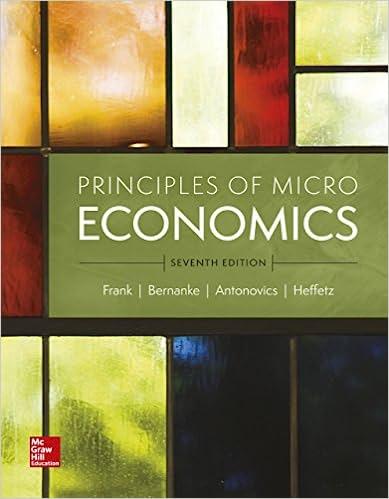


Read carefully and SOLVE The following questions correctly
Government Polices to address Market Failure a.) What are the four major sources of market failure we discussed in class? (2 points) b.) True or False: Two market failures can be more efficient than one. Explain using at least one graph. (4 points) c.) Consider the market for fertilizer. Inverse market demand is given by P - 20 -Q and the private marginal cost of production of fertilizer is MC = 2 + 2Q Additionally, suppose there is an externality cost of $6 per unit due to groundwater pollution created in the production process, i.e. MEC - 6. (Note: this is simpler than Homework 11.) 1.) Solve for the free market equilibrium price and quantity, and depict your solution graphically. Be sure to label your curves and axes. (3 points) (i.) Solve for the socially optimal equilibrium price and quantity, and indicate these on your graph above. (3 points) ill.) Assume there is no policy intervention in this market. Calculate the DWL from the externality and indicate the area on your graph above. (2 points) iv.) Suppose the government implements a per-unit tax to achieve the socially optimal equilibrium. What per-unit tax should be implemented? Draw a new graph to depict the effect of a tax. (2 points) v.J Suppose instead the government implements quotas distributed to producers to achieve the socially optimal equilibrium. What quota should be implemented? Draw a new graph to depict the effect of a quota. (Hint: a quota essentially fixes the supply of a market.) (2 points) vi.) Which policy might consumers prefer? producers? society? (Hint: think about how a tax vs a quota impacts welfare for each group.) (2 points)Suppose that the market for gasoline in Canada can be assumed to be perfectly competitive, and be represented by the following demand and supply functions: Demand for gasoline: G = 30,000 10,000P Supply of gasoline: Q = 10,000 + 10,000P Where G is in millions of litres per year and P is in dollars per l'rtre. a} What would be the equilibrium price and quantityr of gasoline in a free market? b} Suppose that the "social supply' of gasoline, which takes into account not only firm 5' costs of gasoline production but also the environmental cost of gasoline, can be expressed as: G 2 -10,0 00 + 10,000P. Based on this "social supply' of gasoline, what would be the socially optimal equilibrium price and quantity in this market? Please use a diagram to illustrate the socially optimal equilibrium, the equilibrium from part a], and the deadweight loss associated with the equilibrium from part a]. Use that to calculate {the value of] the deadweight loss associated with the equilibrium from part a]. c] Suppose that the government imposes a Pigouvian tax on gasoline [to be transferred by suppliers] of $1 per litre of gasoline. What would be the equilibrium quantity of gasoline sold, and the price paid by buyers, in this case? Illustrate this quantity and price on the diagram from part b}. Please calculate the deadweig ht loss [it any} associated with the 51 tax. Does the Pigouvian tax reduce the deadweight loss compared to the free market outcome, and if so by how much? SECTION A All the questions in this section (questions 1-6) refer to an economy in which the consump- tion (C) and investment (/) functions are given by C = 50 + 0.9 . (Y -T) I = 50 - 1000 . r where Y is real output and r is the real interest rate. Government purchases and taxes are G = 500, T = 500. The money market equilibrium curve or LM curve is M Y P where P is the price level and i is the nominal interest rate. The Central Bank (CB) is initially supplying M = 10000 units of money, and expected inflation is a* = 0.05. The long-run aggregate supply (LRAS) is Y. = 1000. Suddenly, there is a climate shock that changes the marginal propensity to consume (MPC), and the consumption function changes to C' = 50 +0.8 . (Y - T). Question 1 First, we will derive the long-run equilibrium values of output Y', consumption C, investment I, the real and nominal interest rates (r, i) and price P, before and after the climate shock. [29 marks] 1. Explain how the long-run values of (r, i) are determined before the climate shock. 2. Which, if any, of the graphs from Appendix A best depicts the long-run change in the interest rate(s) due to the climate shock? Explain. 3. Explain how the long-run values of (Y, P) are determined before the climate shock. 1. Which, if any, of the graphs from Appendix B best depicts the long-run change in output and price due to the climate shock? Explain. 5. Fill in the following table in your answer sheet with numbers-there are 12 numbers to solve for. You do not need to create a table when you type your answers, but please clearly indicate "Before", "After" and the name of each variable, followed by your












